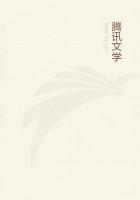First decide upon the kind of a machine you want--monoplane, biplane, or triplane. For a novice the biplane will, as a rule, be found the most satisfactory as it is more compact and therefore the more easily handled.
This will be easily understood when we realize that the surface of a flying machine should be laid out in proportion to the amount of weight it will have to sustain.
The generally accepted rule is that 152 square feet of surface will sustain the weight of an average-sized man, say 170 pounds. Now it follows that if these 152 square feet of surface are used in one plane, as in the monoplane, the length and width of this plane must be greater than if the same amount of surface is secured by using two planes--the biplane. This results in the biplane being more compact and therefore more readily manipulated than the monoplane, which is an important item for a novice.
Glider the Basis of Success.
Flying machines without motors are called gliders. In ****** a flying machine you first construct the glider.
If you use it in this form it remains a glider. If you install a motor it becomes a flying machine. You must have a good glider as the basis of a successful flying machine.
It will be well for the novice, the man who has never had any experience as an aviator, to begin with a glider and master its construction and operation before he essays the more pretentious task of handling a fully-equipped flying machine. In fact, it is essential that he should do so.
Plans for Handy Glider.
A glider with a spread (advancing edge) of 20 feet, and a breadth or depth of 4 feet, will be about right to begin with. Two planes of this size will give the 152 square yards of surface necessary to sustain a man's weight.
Remember that in referring to flying machine measurements "spread" takes the place of what would ordinarily be called "length," and invariably applies to the long or advancing edge of the machine which cuts into the air.
Thus, a glider is spoken of as being 20 feet spread, and 4 feet in depth. So far as mastering the control of the machine is concerned, learning to balance one's self in the air, guiding the machine in any desired direction by changing the position of the body, etc., all this may be learned just as readily, and perhaps more so, with a 20-foot glider than with a larger apparatus.
Kind of Material Required.
There are three all-important features in flying machine construction, viz.: lightness, strength and extreme rigidity. Spruce is the wood generally used for glider frames. Oak, ash and hickory are all stronger, but they are also considerably heavier, and where the saving of weight is essential, the difference is largely in favor of spruce. This will be seen in the following table:
Weight Tensile Compressive per cubic ft. Strength Strength Wood in lbs. lbs. per sq. in. lbs. per sq in.
Hickory 53 12,000 8,500Oak 50 12,000 9,000Ash 38 12,000 6,000Walnut 38 8,000 6,000Spruce 25 8,000 5,000Pine 25 5,000 4,500Considering the marked saving in weight spruce has a greater percentage of tensile strength than any of the other woods. It is also easier to find in long, straight-grained pieces free from knots, and it is this kind only that should be used in flying machine construction.
You will next need some spools or hanks of No. 6linen shoe thread, metal sockets, a supply of strong piano wire, a quantity of closely-woven silk or cotton cloth, glue, turnbuckles, varnish, etc.
Names of the Various Parts.
The long strips, four in number, which form the front and rear edges of the upper and lower frames, are called the horizontal beams. These are each 20 feet in length.
These horizontal beams are connected by upright strips, 4 feet long, called stanchions. There are usually 12 of these, six on the front edge, and six on the rear. They serve to hold the upper plane away from the lower one.
Next comes the ribs. These are 4 feet in length (projecting for a foot over the rear beam), and while intended principally as a support to the cloth covering of the planes, also tend to hold the frame together in a horizontal position just as the stanchions do in the vertical.
There are forty-one of these ribs, twenty-one on the upper and twenty on the lower plane. Then come the struts, the main pieces which join the horizontal beams. All of these parts are shown in the illustrations, reference to which will make the meaning of the various names clear.
Quantity and Cost of Material.
For the horizontal beams four pieces of spruce, 20 feet long, 1 1/2 inches wide and 3/4 inch thick are necessary.
These pieces must be straight-grain, and absolutely free from knots. If it is impossible to obtain clear pieces of this length, shorter ones may be spliced, but this is not advised as it adds materially to the weight. The twelve stanchions should be 4 feet long and 7/8 inch in diameter and rounded in form so as to offer as little resistance as possible to the wind. The struts, there are twelve of them, are 3 feet long by 11/4 x 1/2 inch. For a 20-foot biplane about 20 yards of stout silk or unbleached muslin, of standard one yard width, will be needed. The forty-one ribs are each 4 feet long, and 1/2 inch square. A roll of No. 12 piano wire, twenty-four sockets, a package of small copper tacks, a pot of glue, and similar accessories will be required. The entire cost of this material should not exceed $20. The wood and cloth will be the two largest items, and these should not cost more than $10. This leaves $10 for the varnish, wire, tacks, glue, and other incidentals. This estimate is made for cost of materials only, it being taken for granted that the experimenter will construct his own glider. Should the services of a carpenter be required the total cost will probably approximate $60 or $70.
Application of the Rudders.















